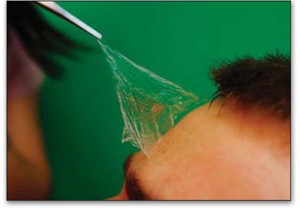E-Skin: Your Doctor at Home

By Sayantani Dastidar
As futuristic as it may sound, wearing a wireless device to monitor your health may be around the corner. John Rogers, a materials scientist at the University of Illinois, and his team worked for about 15 years to make this science-fiction-like feat a possibility. The researchers developed an epidermal electronic system consisting of multifunctional sensors integrated on a flexible thin patch. According to their recently published study, the patch can be mounted on the skin to extract biological information.
Ready-To-Wear
The new device can monitor key functions of the human body such as heart activity, brain waves and muscle movement in a completely noninvasive way, without tangle-prone, bulky wires. Its ultra-thin nature enables it to stick to the skin with the help of relatively weak (but powerful) van der Waals forces, rather than adhesives that can cause irritation.
Rogers and his team compared the electrophysiological information from EEGs, ECGs and EMGs recorded by the monitors, with data obtained from bulkier, commercially used devices. The results from the miniscule monitors were as accurate as those from the larger instruments.
The wearable monitor shows great potential for use as a human–computer interface. It can be especially useful for people suffering from laryngeal diseases, premature infants or for improved control of prosthetics, which haven’t been optimized by conventional medical sensors thus far.
This low-modulus device, with “skin-like” stretchiness, consists of biocompatible antennae, light-emitting diodes, electrodes, electronics, sensors, power supply and communication components. It can be applied and removed like a temporary tattoo and can be used on many parts of the body without the risk of tearing.
As of now, the sensor can only be used (continuously) for a few days. Researchers are still looking for a new technology that would enable months of monitoring. The research group also made several recommendations for future development, including the addition of piezoelectric devices for uploading data or commands. Health monitoring will no doubt become less complicated and more convenient with time.
Classroom Discussion
- What possible steps should be taken to bring “E-skin” to the mass market?
- What advantages does the “E-skin” possess over traditional devices?